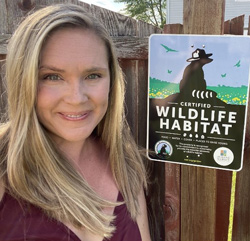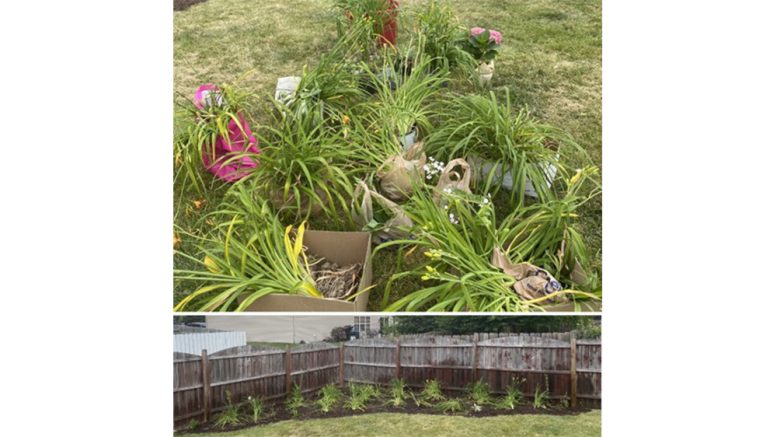By MEGAN RATHZ
When Nature Speaks
 We have arrived at the point in the year where our once beautiful blooms of spring and summer have faded and look like dried up eyesores. The remains of these flowers may even look like Halloween decorations in our gardens. We have most likely replaced them with pumpkins, gourds, mums, corn stalks and are likely gauging the amount of Halloween candy we need to purchase for eager trick-or-treaters.
We have arrived at the point in the year where our once beautiful blooms of spring and summer have faded and look like dried up eyesores. The remains of these flowers may even look like Halloween decorations in our gardens. We have most likely replaced them with pumpkins, gourds, mums, corn stalks and are likely gauging the amount of Halloween candy we need to purchase for eager trick-or-treaters.
Before our focus shifts completely to the daily fall happenings, our garden needs our help to promote optimal growth by dividing and transplanting our perennials. Those dried up remnants in our garden may be a sad sight for some, but I see it as an opportunity to help my treasured flowers thrive and come back to me better than ever.
Plants that grow back each year are called perennials. Many well-established perennials need to be divided every three to five years to enhance their performance and rejuvenate them. A good rule of thumb is if the flower blooms in spring and early summer, the best time to divide and transplant is the fall. If the flower blooms late summer and fall, the best time to transplant is the spring.
When you transplant flowers, you are simply moving flowers to a new location. Perhaps you need a different location that receives more or less sun, or you are moving to a new home. You would essentially treat a transplanted flower just as you would any plant purchased at a garden nursery. When you divide flowers, you physically dig up the plant, splitting it into new plants, allowing their roots to grow and absorb nutrients and water.
It is important to be selective about when you transplant and divide plants. You never want to divide or transplant during the hottest part of summer; this causes unnecessary stress on plants and can result in the plant experiencing shock. Overcast days are ideal and it is even better if it has been raining recently where the soil is wet and easy to dig. Once you have dug up the flower, you will want to keep it in a shaded area and moist until it is replanted. When dividing in the fall, you will want to allow the roots of the plants plenty of time to establish themselves before the ground freezes.
The purpose of dividing plants is to promote growth and give the plant a chance to perform at its best. When there is overcrowding in a garden, plants are essentially in competition for all the same nutrients and water. When plants are divided, it stimulates new growth and reduces this competition; dividing also allows you to control the size of the plants in your garden.
The process to divide a plant is very simple, but it is essential that it be done correctly. If you are dividing a daylily, you will want to dig all around the base of the plant until you are able to loosen the soil and uproot it from the ground. Look at the clump to determine an appropriate place to divide the plant with a serrated pruning saw or knife, cutting directly through the clump. Once you have made the division, you can replant in the same space, move to a different location altogether, or better yet, share it with a friend!
Dividing plants is a wonderful (and free) way to increase the number of plants you have in your garden and the best way to rejuvenate plants. One telltale sign that your flower is in need of division is when you notice the center of the plant has a bald spot. I noticed this with my Siberian iris and knew that it was time to divide. Look at the plants in your garden to see which ones may need division. They will thank you by offering many happy returns next season!
We must invest in the flowers of our gardens and make plans for their longevity. In the words of Francis Hodgson Burnett’s cherished novel The Secret Garden, “As long as you have a garden, you have a future. And as long as you have a future, you are alive!”
Nature is speaking to us. It is asking that we invest in the future of the plants in our gardens. Are you listening?
Megan Rathz is a wife, mother and teacher. She says everything she has ever learned in life came from her Master Gardener mother.


I have so many flowers that need to be divided. I love sharing my plants with others. I often trade with fellow ladies in my book club. Thanks for the helpful information!
Thank you for being so thorough in explaining how and why you should divide plants. This is great information for all gardening lovers. And well written too!
Thank you for the advice on dividing my perinals!
What a wonderfully informative article! Thank you so much! With the weekends warm temperatures…I know exactly what the hubby and I will be doing!